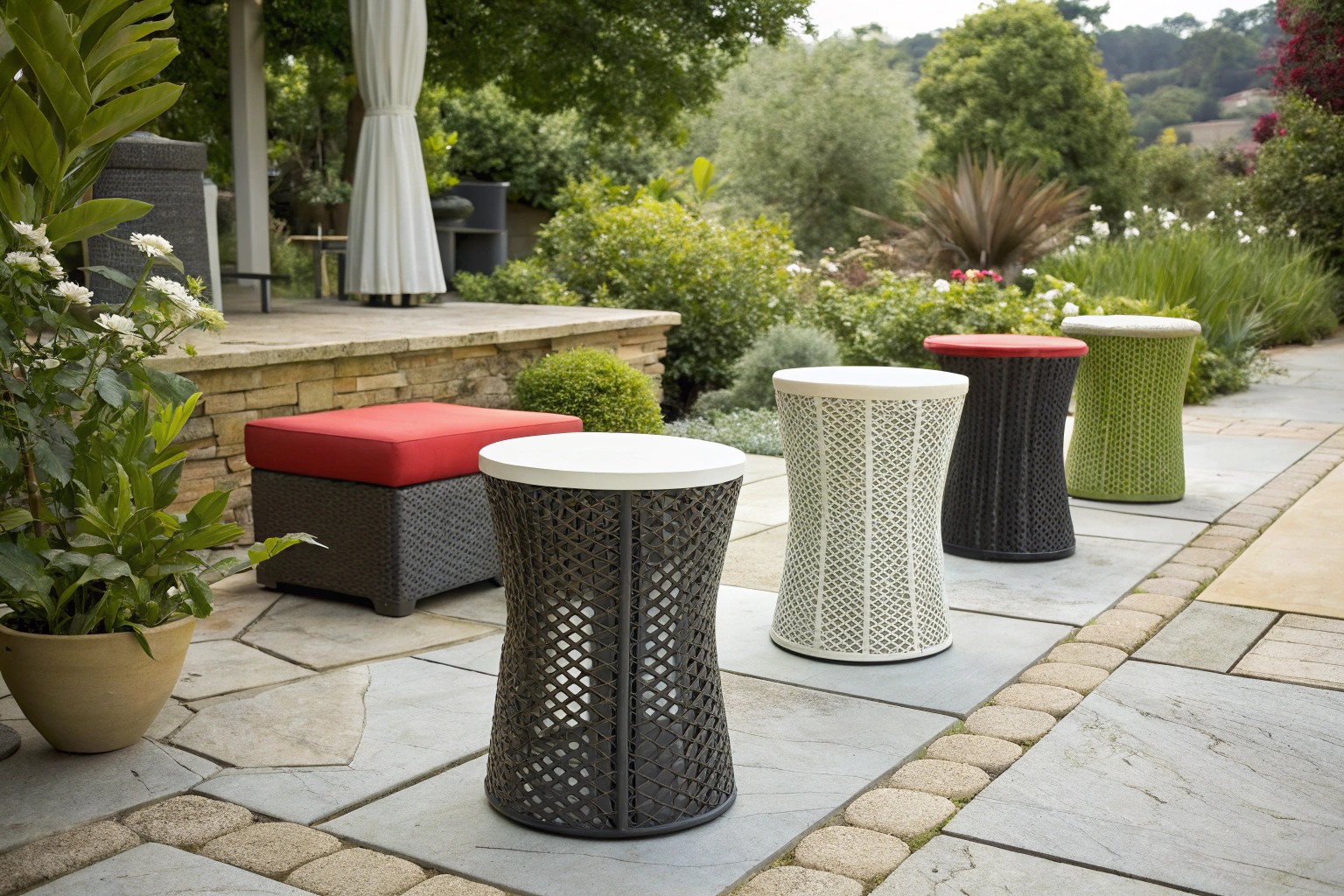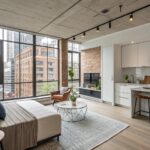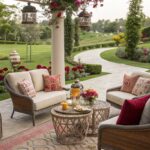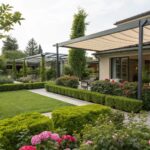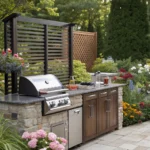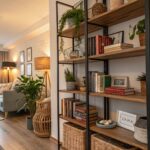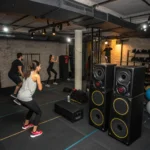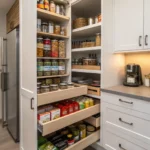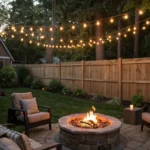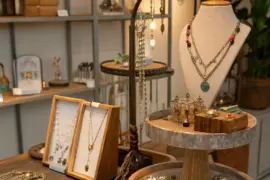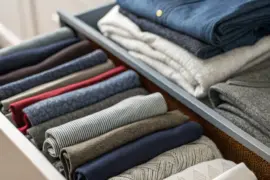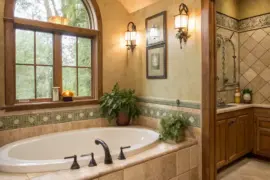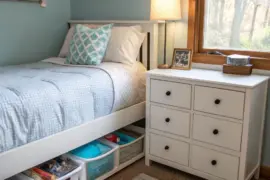Garden stools represent one of the most versatile and underestimated design elements in contemporary outdoor and indoor spaces. These compact, multi-functional pieces have evolved from ancient Chinese courtyards to become essential components in modern American homes, offering both practical solutions and sophisticated aesthetic appeal.
The Timeless Appeal of Garden Stools
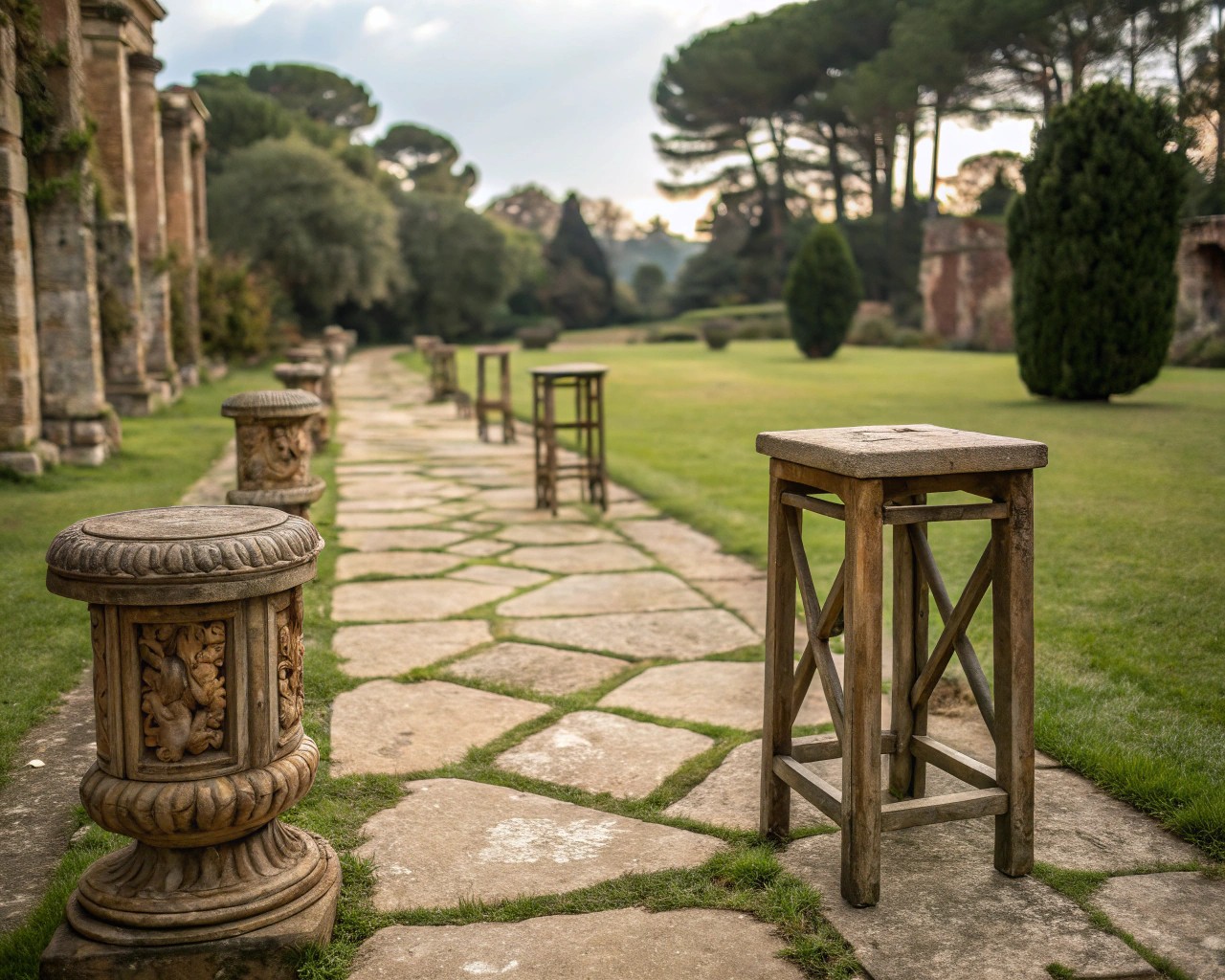
The garden stool’s journey begins in ancient China, where ceramic versions first appeared during the Tang Dynasty (618-907 AD). However, the designs most recognizable today originated during the Ming Dynasty (1368-1644), when these barrel or drum-shaped seats became focal points in traditional Chinese courtyards. What started as practical outdoor seating has transformed into one of the most adaptable furnishing pieces available to contemporary designers.
The enduring popularity of garden stools stems from their fundamental design principle: maximum functionality within minimal space. Unlike traditional furniture that serves a single purpose, these pieces seamlessly transition between roles as seating, tables, plant stands, and decorative accents. This versatility makes them particularly valuable in today’s homes where space efficiency and multi-functional design are paramount.
I’ve observed that homeowners often underestimate the visual impact these seemingly simple pieces can create. A strategically placed garden stool can anchor a seating arrangement, provide a pop of color, or serve as a textural element that elevates an entire room’s design. Their compact scale allows them to fit into spaces where larger furniture would overwhelm, making them ideal solutions for apartments, condominiums, and smaller outdoor areas.
Material Mastery: Choosing the Right Foundation
Ceramic and Porcelain Options
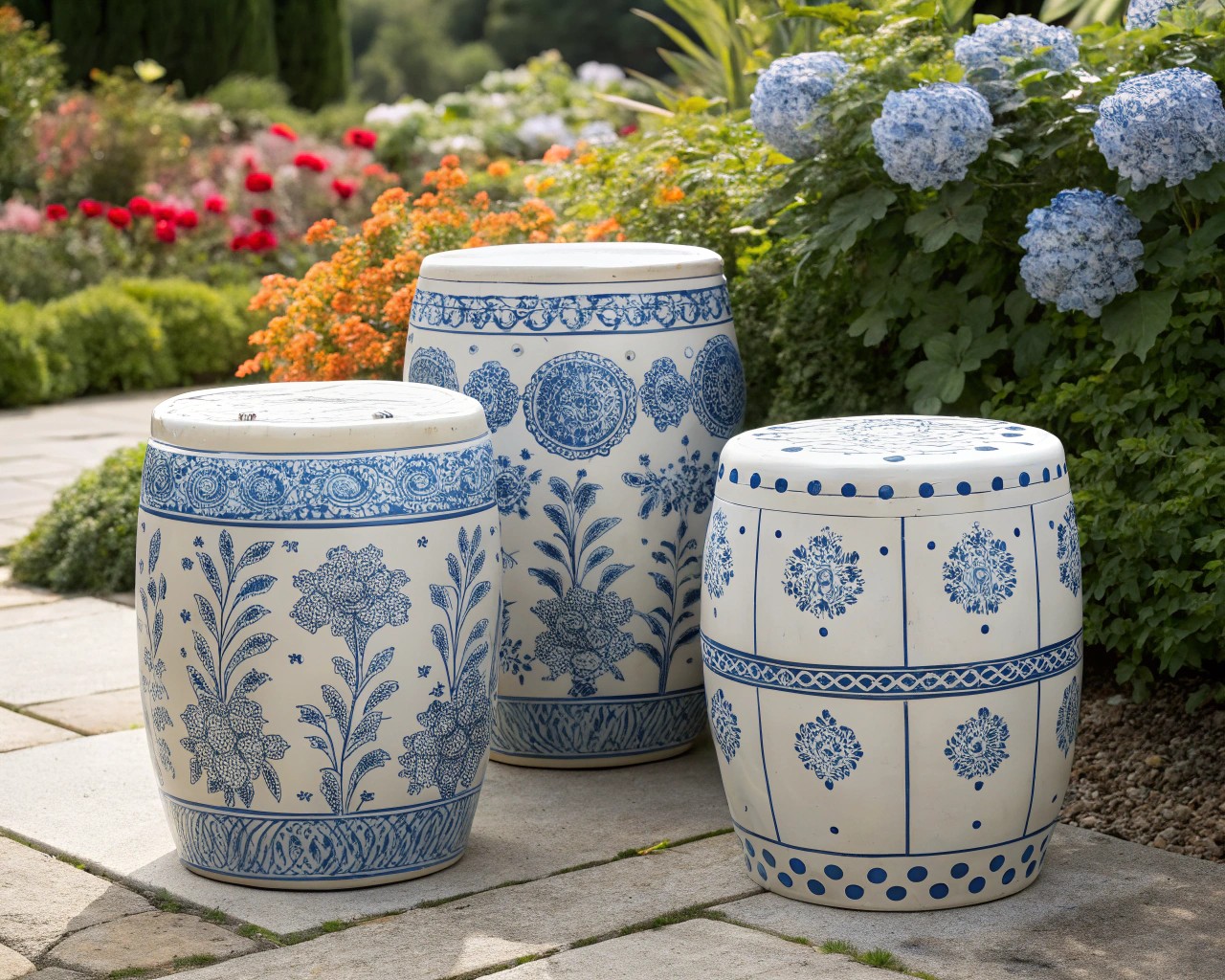
Ceramic garden stools remain the most popular choice, offering durability and weather resistance that makes them suitable for year-round outdoor use. Traditional ceramic stools feature intricate patterns, often incorporating motifs of birds, flowers, and geometric designs painted in classic blue and white colorways. Modern interpretations expand this palette to include solid colors, contemporary patterns, and varied textures.
When selecting ceramic stools, consider these key factors:
Durability Features:
- High-temperature firing (up to 1,200 degrees) for enhanced weather resistance
- Glazed finishes that resist fading and moisture damage
- Weight capacity ratings (typically 250-300 pounds for quality pieces)
Design Considerations:
- Perforated sides for drainage when used as plant stands
- Solid drum construction for maximum stability
- Hand-painted details that add unique character to each piece
Metal and Alternative Materials
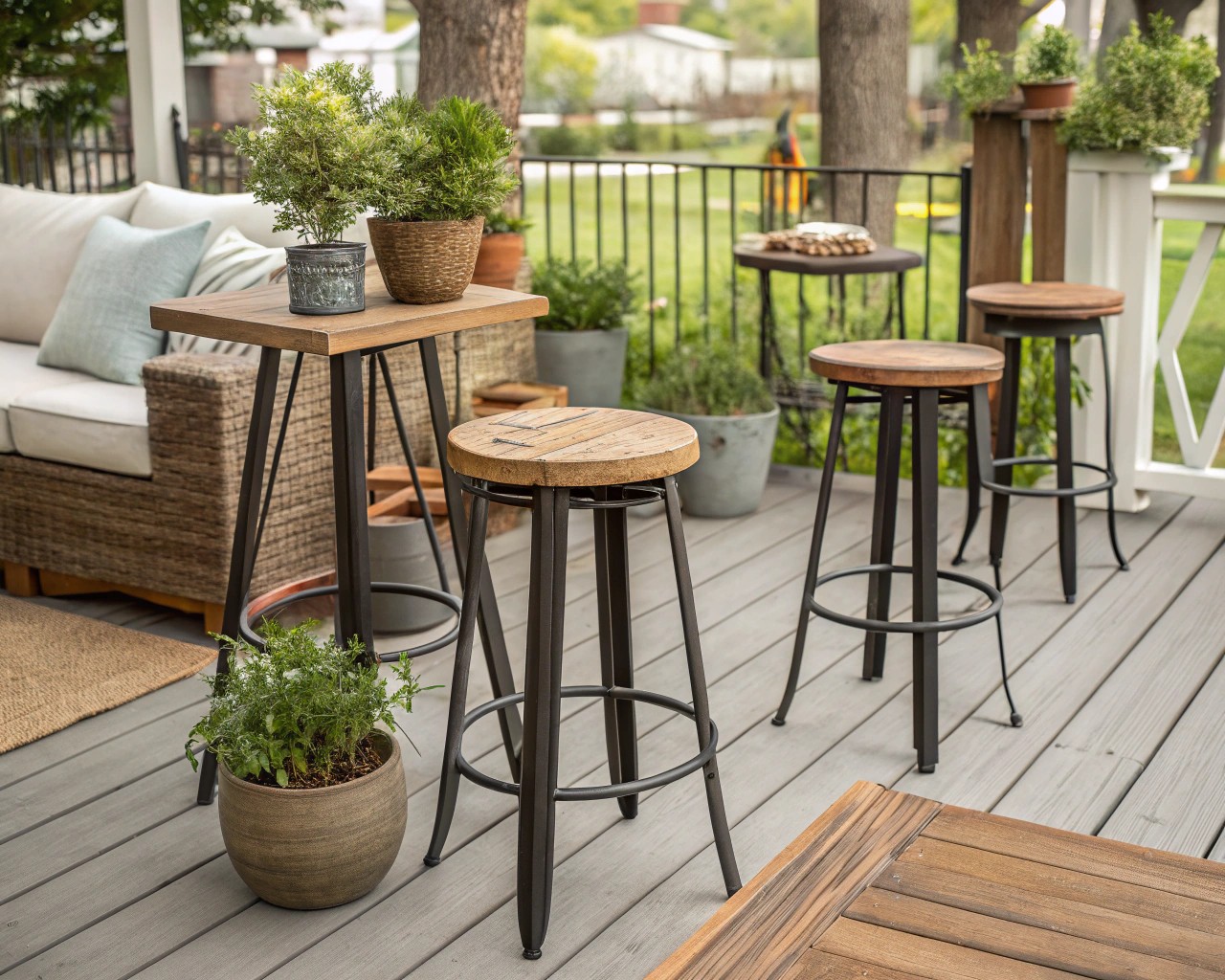
Metal garden stools offer contemporary aesthetics and exceptional durability. Aluminum and stainless steel versions resist corrosion and can remain outdoors year-round without maintenance. These materials work particularly well in modern and industrial design schemes where clean lines and minimal ornamentation are preferred.
Wood options, particularly those crafted from grade-A teak, provide natural beauty and remarkable longevity. Teak’s high natural oil content makes it highly water-resistant, allowing wooden stools to function effectively both indoors and outdoors. The warm tones and natural grain patterns of wood stools complement traditional and transitional design styles exceptionally well.
Versatile Applications: Beyond Traditional Seating
Indoor Integration Strategies

Garden stools excel in indoor environments where their compact size and visual lightness provide solutions that traditional furniture cannot match. In living rooms, they serve as mobile side tables that can be easily repositioned for entertaining or daily use. Their ability to tuck under console tables when not needed makes them particularly valuable in smaller spaces.
Bathroom Applications:
The water-resistant properties of ceramic and teak stools make them ideal for bathroom use. Position them beside bathtubs as surfaces for candles, books, or beverages, or use them as seating at vanity areas. Their non-porous surfaces resist moisture and are easy to clean.
Bedroom Functionality:
Replace traditional nightstands with garden stools for a more relaxed, informal aesthetic. Their lower height works particularly well with platform beds or in rooms where visual lightness is desired. The open space beneath drum-style stools also helps maintain an uncluttered appearance.
Outdoor Excellence
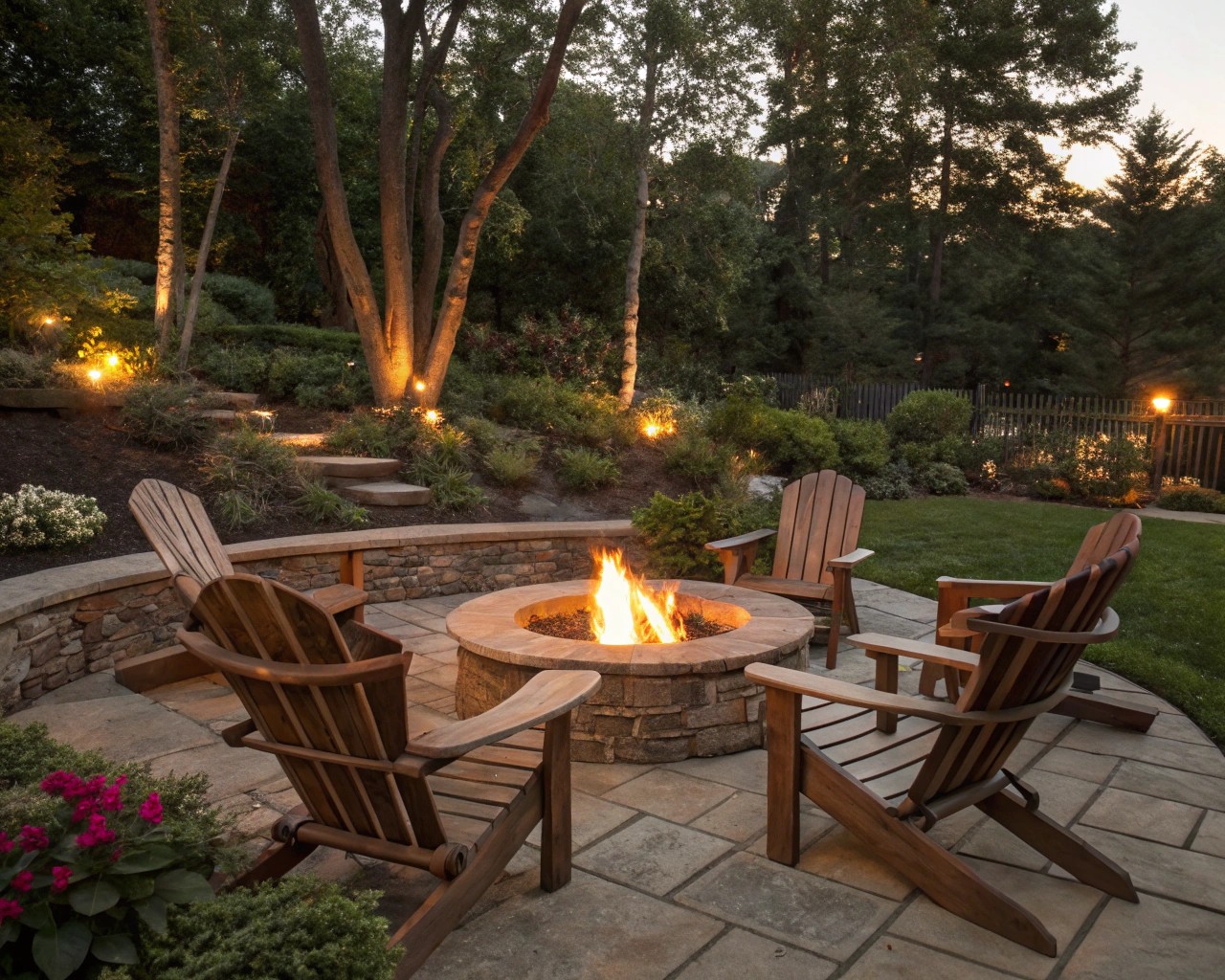
In outdoor settings, garden stools demonstrate their original intended function while adapting to contemporary needs. Use them to create flexible seating arrangements around fire pits or conversation areas where fixed furniture might be too formal. Their portability allows for easy reconfiguration as entertaining needs change.
Plant Display Solutions:
Elevate container gardens using stools of varying heights to create dynamic plant compositions. The drainage holes in many ceramic designs make them particularly suitable for this application, preventing water accumulation that could damage both plants and stool.
Poolside and Patio Use:
Select stools with wide, stable bases for poolside applications where safety is paramount. Their low profile reduces wind resistance, making them more stable than tall furniture in exposed locations.
Design Principles: Placement and Proportion
Scale and Proportion Guidelines
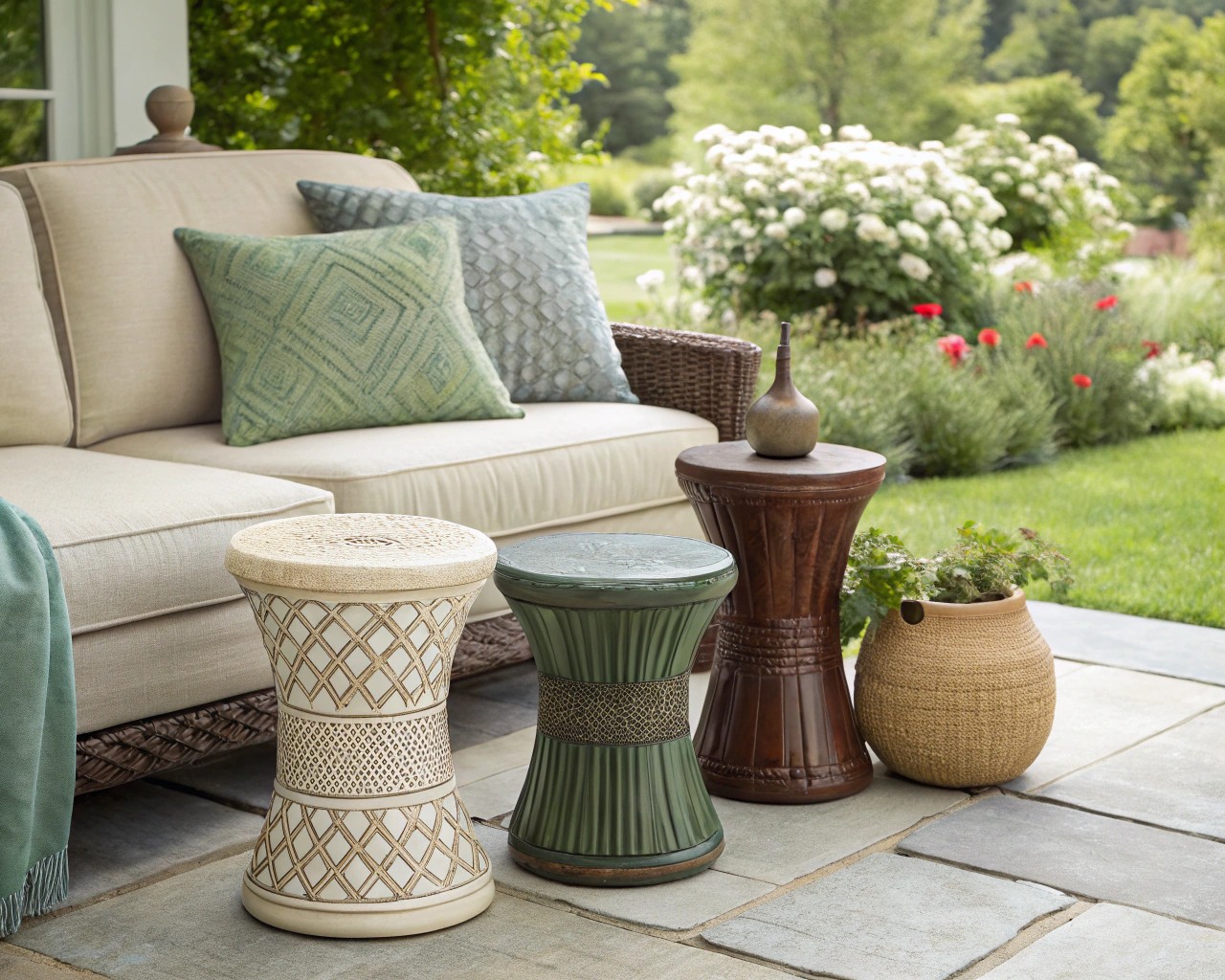
Successful stool integration requires careful attention to scale relationships. Standard garden stools typically measure 12-18 inches in diameter and 16-20 inches in height. This size works well as seating for most adults while maintaining appropriate proportions when used as side tables.
Height Considerations:
- 16-18 inches: Optimal for use with standard sofas and chairs
- 18-20 inches: Better suited for higher seating or as plant stands
- 12-16 inches: Ideal for bathroom applications or children’s spaces
Color and Pattern Integration
Traditional blue and white garden stools offer timeless appeal that complements virtually any color scheme. However, contemporary interpretations in solid colors or updated patterns can serve as focal points in neutral rooms. Consider the stool’s visual weight within your overall design composition – intricate patterns draw attention and should be balanced with simpler surrounding elements.
Pattern Mixing Strategies:
When incorporating patterned stools into rooms with existing patterns, maintain visual harmony by limiting the total number of patterns and ensuring they share at least one common color. Solid-colored stools provide safer options for pattern-heavy spaces.
Practical Considerations: Durability and Maintenance
Weather Resistance Requirements
For outdoor applications, select stools specifically designed for exterior use. Quality ceramic pieces fired at high temperatures resist freeze-thaw damage, while metal options require powder-coating or other protective finishes to prevent corrosion. Wood stools need proper sealing and regular maintenance to maintain their appearance and structural integrity.
Seasonal Care:
- Ceramic: Can remain outdoors year-round in most climates
- Metal: Requires occasional cleaning and inspection for finish damage
- Wood: Benefits from annual oiling and should be covered during extreme weather
Weight and Mobility Factors
Consider the intended use when evaluating stool weight. Heavier ceramic pieces provide stability but may be difficult to move frequently. Lighter alternatives in resin or hollow metal construction offer easier portability while maintaining adequate stability for most applications.
Style Integration: Complementing Your Design Aesthetic
Traditional and Transitional Spaces
Classic blue and white ceramic stools integrate beautifully with traditional design schemes, particularly those incorporating Chinoiserie elements or English garden aesthetics. Their historical precedent makes them natural choices for formal gardens and traditional interiors.
For transitional spaces that blend traditional and contemporary elements, select stools with classic forms but updated finishes or simplified patterns. This approach maintains the timeless appeal while ensuring compatibility with modern furnishings.
Contemporary and Modern Applications
In contemporary settings, garden stools can provide organic contrast to angular furniture and rigid architectural elements. Select pieces with clean lines and minimal ornamentation to maintain design consistency while adding textural interest.
Industrial and Urban Aesthetics:
Metal stools in raw or powder-coated finishes complement industrial design themes effectively. Their utilitarian appearance aligns with the honest materials and functional aesthetics characteristic of this style.
Selection Criteria: Making Informed Choices
Quality Assessment
When evaluating garden stools, examine construction details that indicate quality and longevity. Look for:
Ceramic/Porcelain Quality Indicators:
- Even glaze application without drips or thin spots
- Clean, precise pattern application
- Substantial wall thickness (minimum 1/4 inch for durability)
- Properly finished base that won’t scratch floors
Metal Construction Standards:
- Smooth, consistent welds on seamed pieces
- Appropriate finish thickness and even application
- Adequate material thickness to prevent denting
- Proper drainage features for outdoor use
Size and Proportion Planning
Before purchasing, measure the intended space and consider the stool’s relationship to surrounding furniture. Create cardboard templates to test placement options and ensure proper scale relationships. Remember that stools appear larger when empty than when integrated into furnished spaces.

